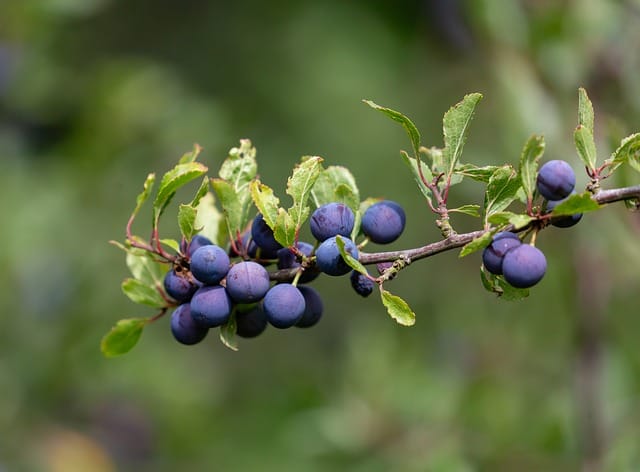How to grow Damsons
Welcoming you to the world of growing Damsons, this article aims to provide you with all the information you need to successfully cultivate these delicious fruits in your backyard or garden

In this article:
Introduction
Welcoming you to the world of growing Damsons, this article aims to provide you with all the information you need to successfully cultivate these delicious fruits in your backyard or garden. Damsons are small purple plums that are known for their tart flavor and versatility in various culinary preparations. Let's delve into the details of growing Damsons.
What are Damsons?
Damsons, scientifically known as Prunus domestica subsp. insititia, are a variety of small plum-like fruits that belong to the Rosaceae family. They have a distinct, rich flavor and are often used to make jams, jellies, desserts, and even alcoholic beverages.
Suitable Climate and Location
Damsons thrive in temperate climates, typically in areas where summers are warm but not scorching hot, and winters are cool but not extremely cold. They require a minimum of 1,200 chilling hours below 45°F (7°C) during the dormant season. Choose a location that receives full sun for at least six hours a day and offers protection from strong winds.
Soil Preparation
Damsons prefer well-drained, slightly acidic to neutral soil (pH 6.0-7.0). Before planting, amend the soil with organic matter such as compost or well-rotted manure to improve drainage and fertility. Remove any weeds and ensure the soil is loose and friable.
Choosing and Planting Damson Trees
When selecting a Damson tree, choose a certified disease-free nursery variety. Consider the available space, as some Damson varieties can grow up to 20 feet tall. Allow enough room for the tree to spread its branches and ensure proper air circulation. Dig a hole twice as wide and deep as the root ball, place the tree in the hole, and backfill with soil. Water thoroughly after planting.
Watering and Fertilizing
Water Damson trees regularly, especially during dry spells, to keep the soil evenly moist. Avoid overwatering, as this can lead to root rot. Apply a balanced fertilizer, such as a 10-10-10 formula, in early spring before new growth starts and again in late spring. Follow the manufacturer's instructions regarding application rates.
Pruning Techniques
Pruning Damson trees is essential for healthy growth, improving fruit production, and maintaining a desired shape. Prune during the dormant season, typically in late winter or early spring. Remove dead, damaged, and crossing branches. Thin out the branches to allow light penetration and proper airflow.
Pest and Disease Control
Various pests and diseases can affect Damson trees, such as aphids, plum curculio, brown rot, and silver leaf disease. Regularly inspect your trees for signs of infestation or disease. Use organic pest control methods whenever possible, and consult a local gardening expert for specific recommendations.
Harvesting and Storing Damson Fruit
Damson fruits are typically harvested when they are fully ripe, usually in late summer or early autumn. They should have a slightly soft texture and deep purple color. Gently twist or cut the fruits from the tree, being careful not to damage the stems or branches. Store Damsons in the refrigerator for up to two weeks or process them into preserves, jams, or other recipes for longer shelf life.
Common Uses and Recipes for Damsons
Damsons are incredibly versatile fruits with a wide range of uses. They make delicious jams, jellies, and fruit pies. They can also be used as a topping for desserts, added to savory dishes for a unique twist, or transformed into damson gin, a popular alcoholic beverage. Get creative and explore various recipes to fully savor the flavors of Damsons.
Conclusion
Growing Damsons can be a rewarding experience, providing you with an abundance of flavorful fruits and an attractive tree in your garden. With proper care and attention to the specific needs of Damson trees, you can successfully cultivate and enjoy this unique fruit for years to come. Remember to always adapt your practices based on your local climate and specific cultivar requirements. Happy gardening!
